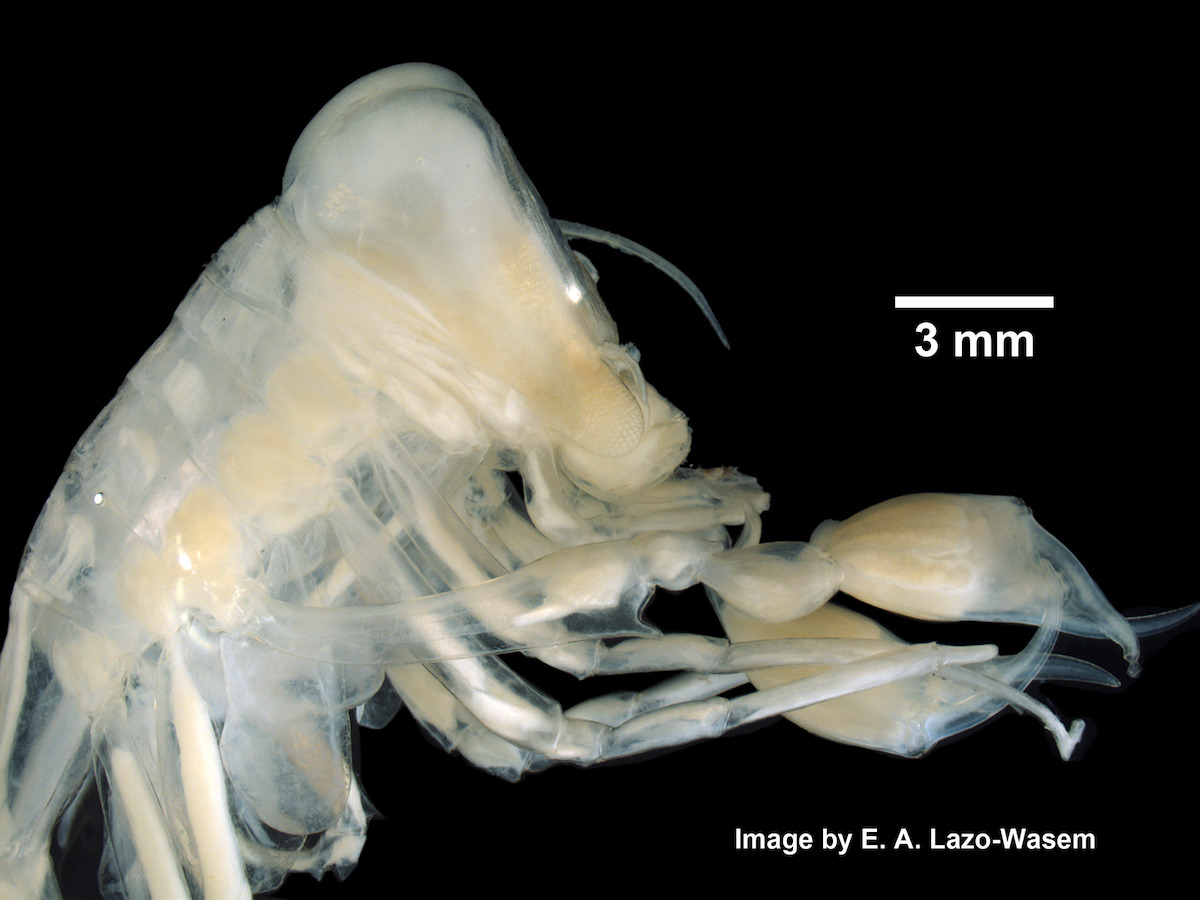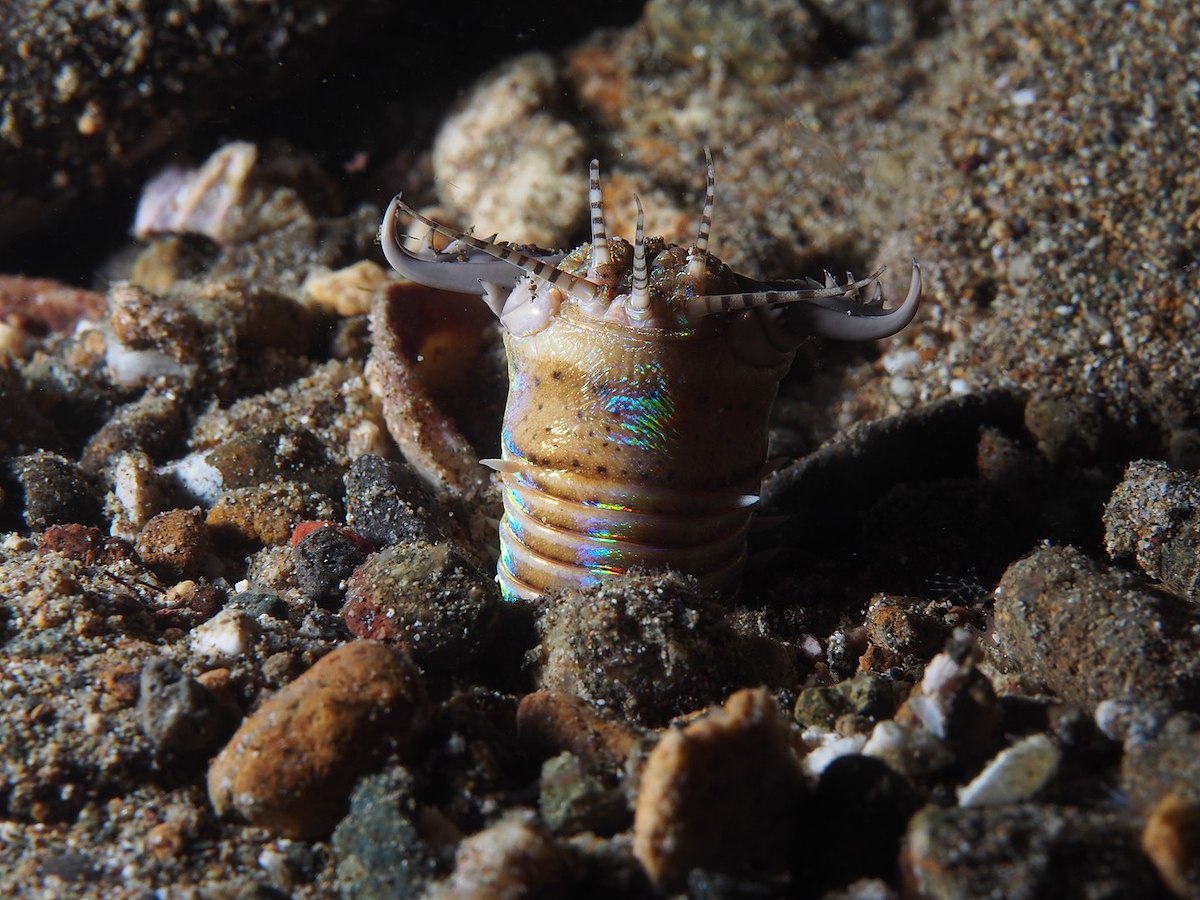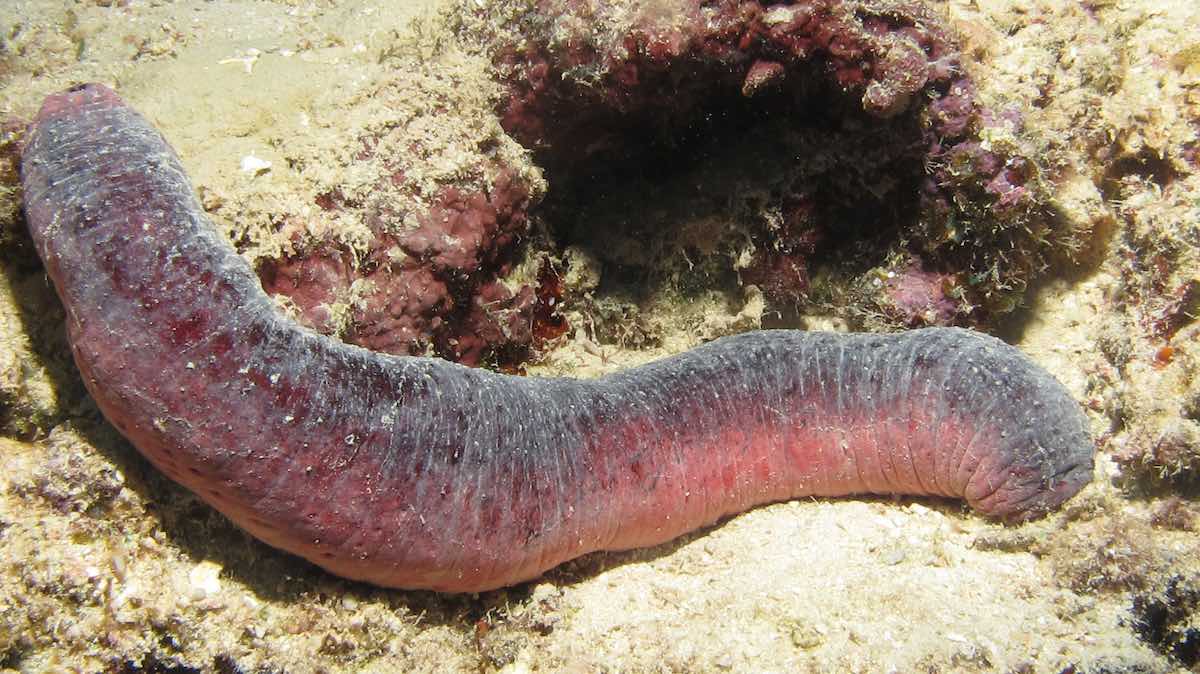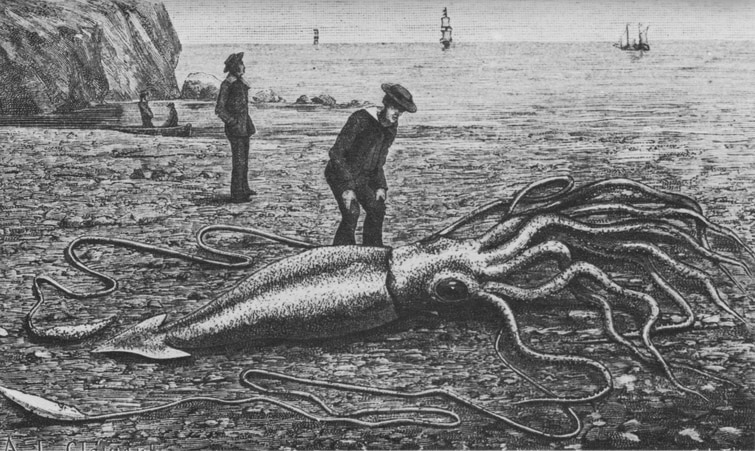5 Famous Movie Monsters Inspired by Marine Animals
When writers invent terrifying movie monsters, it’s no surprise they turn to the sea for inspiration.

The ocean is a mysterious place, home to strange and wonderful critters that seem out of this world. For proof, look no further than the jaw-extending goblin shark, the luminous deep-sea angler fish or the ghostly chimaera.
So, when it comes time for writers to invent terrifying movie monsters, it’s no surprise that they turn to the sea for inspiration. Marine evolution has produced plenty of spines, shapes and strange behaviors for them to choose from.
Here are five of our favorite movie monsters that resemble real-life ocean organisms. Celebrate this Halloween with a screening of your favorites! Note: Although we find the resemblance uncanny, not all directors have confirmed these animals actually inspired their movie look-alikes!
Tremors: Graboids as Bobbit Worms

Tremors, a 1990s sci-fi gem starring the illustrious Kevin Bacon, features a town plagued by a killer sandworms called graboids. These 30-foot-long worms live underground and burst through the desert sand with their powerful jaws to attack and kill their prey (thankfully, that prey does not include Kevin Bacon). A graboid look-alike is alive and well in our ocean: the bobbit worm. Although it’s not 30 feet long (more like 10 feet), it has a similar hunting mechanism to the Tremors monster. The bobbit worm buries itself in the sand, then lunges and snaps its jaws when prey comes by. Those chompers are strong enough to cut prey in two—and could cause some serious problems if you got close enough to test it out.
Alien: Xenomorph as Phronima

The Xenomorph is one of the most iconic—and terrifying—movie monsters out there. The Xenomorph is a parasite that plants its larvae in a human host, which will consume the host from inside out before emerging into the world (as illustrated by that famous chest-bursting scene in Alien). It’s rumored Xenomorphs (or, at least the alien queen morph) are inspired by the real-life ocean parasite Phronima. Phronima are tiny crustaceans that burrow a barrel-shaped nook inside salps (gelatinous plankton), killing the host. Phronima lay their eggs inside the dead salp, then continue to ride around with their young in the hollow salp body in a sort of twisted corpse-mobile. In this case, it’s safe to say the truth is even stranger than fiction.
Star Wars: Jabba the Hutt as a Sea Cucumber

Star Wars’ Jabba the Hutt was a powerful crime boss, known for his ruthless behavior and imposing slug-like appearance. He was almost 13 feet long and moved by slithering his bulbous body along the ground. Although the largest sea cucumbers can only grow to half that size (about 6.5 feet) their soft, bumpy bodies are decidedly Jabba-like. Sea cucumbers can also expel their insides as a self-defense mechanism, and although we have no proof Jabba could do that, we also have no proof that he couldn’t.
Pirates of the Caribbean: Kraken as a Giant Squid

The legend of the Kraken has been around for centuries, and is a popular monster in pop culture, including in Atlantis, Clash of the Titans, Twenty Thousand Leagues Under the Sea, and more. In the Pirates of the Caribbean series, the kraken is controlled by Davy Jones, who sends the monster to attack those who are in debt to him. The Kraken looks like a massive cephalopod, and the original kraken lore was likely inspired by sightings of giant squid. Although the real giant squid couldn’t crush a ship with its tentacles like the kraken, it can still reach up to 43 feet in length.
War of the Worlds: Aliens as Jellyfish

Since its initial release in 1897, H.G. Well’s War of the Worlds has sparked a number of movies, comics and TV series. In Steven Spielberg’s 2005 adaptation of the classic tale, the invading aliens’ appearance was supposedly inspired by jellyfish. They have round heads and numerous tentacles, and move in a light way that makes them seem like they are underwater (apparently, Spielberg wanted them to look “graceful”). In reality, jellyfish move by contracting and relaxing their bell, which moves the animal forward (as opposed the movie aliens, who walk on their tentacles). There are other major differences too, including the aliens being the size of skyscrapers and able to destroy entire cities. But otherwise, the resemblance is clear.
Do you have any examples of movie monsters inspired by marine animals that we’ve missed? If so, take to social media and share your creative examples with us by tagging @OurOcean!